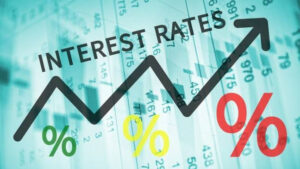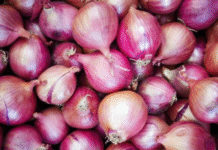 The interest rate on overnight borrowing and lending in the inter-bank call money market hit 8.07 percent by the end of last week, the highest in more than a decade, reflecting a tight liquidity crunch in the banking sector.
The interest rate on overnight borrowing and lending in the inter-bank call money market hit 8.07 percent by the end of last week, the highest in more than a decade, reflecting a tight liquidity crunch in the banking sector.
“There is a crisis of taka and dollar in the market and the call money rate is a reflection of that,” said the treasury chief of a private bank seeking to remain unnamed.
Bankers said increased government borrowing through treasury bills and bonds from the banking system alongside the purchase of dollars by banks from the Bangladesh Bank (BB) have been driving up the overall interest rate in the money market since July, when the central bank removed the cap on the lending rate.
It introduced the Six Months Moving Average Rate of Treasury Bill (SMART) as a benchmark in order to allow the interest rate to become more market based, a decision that came following long-standing calls from analysts to lift the cap in order to fight stubbornly high inflation, which averaged 9.37 percent in October.
The data from the central bank showed that the highest monthly weighted average call money rate was recorded at 12.82 percent in 2012.
Since then, the interest rate for overnight lending and borrowing began to fall and hit as low as 1.67 percent in February 2021 as the economy slowed amid the Covid-19 pandemic.
The call money rate began to rise in the subsequent months and eventually touched 6.06 percent in June this year. It jumped to 6.30 percent the next month. In September, the call money rate stood at 6.41 percent.
The central bank is yet to publish the weighted average call money rate for October, but the daily average interest rate for overnight lending stood at 7.87 percent at the end of last month.
Since November 7, the average call money interest rate has been rising consistently, data by the BB showed.
“There is a liquidity crisis in the banking sector, especially in Shariah-based banks,” said Emranul Huq, managing director and CEO of Dhaka Bank, a private bank.
“Some banks are facing a liquidity shortage. But liquidity situation in many banks is still good.”
At the end of September, surplus liquidity dropped to Tk 164,000 crore from Tk 175,000 crore a month ago. The amount of excess funds in the banking sector in July stood at Tk 181,000 crore, according to BB data.
He said a lack of liquidity was driving the yield of treasury bills and bonds. At present, he said, the yield of a 91-day treasury bill is over 10 percent.
“It indicates that the interest rate is trending upwards,” he said, “The interest rate might have gone up further had the demand for private sector credit and investment been higher.”
A top official of another private bank said the upward trend in the interest rate and call money rate would continue.
As the central bank is not giving high-powered money to the government to arrest inflation, the government is relying more on the banking sector to finance its expenses, thereby slowing revenue flow, he added.
An official at the BB said deposit and lending rates at banks had been increasing after the central bank lifted the 9 percent cap on the lending rate.
It has pushed up the cost of funds, so banks are charging a higher rate for lending, he added.
Daily Star









